
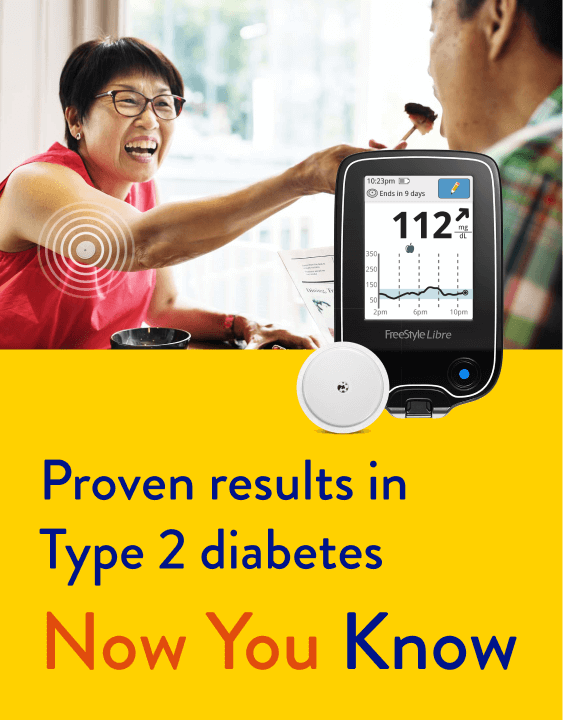
Non-insulin therapy
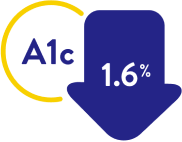
After 22 weeks
In people with T2D who were using non-insulin therapy and FreeStyle Libre (p<0.001 vs. baseline A1c)27
Basal insulin users
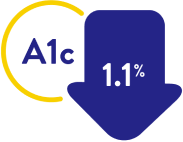
After 22 weeks
In people with T2D who were using basal insulin and FreeStyle Libre (p<0.001 vs. baseline A1c)27

Baseline A1c:
10.1%
Follow-up A1c:
8.5%
Non-insulin therapy
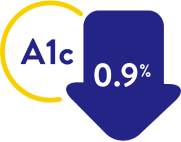
At 24 weeks
In people with T2D who were using non-insulin therapy and FreeStyle Libre system (p<0.0001)21
Patients with T2D on MDI
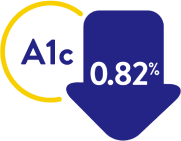
In 10 weeks
In people with T2D on MDI using the FreeStyle Libre system saw a significant A1c reduction compared to SMBG (0.82% vs 0.33%, respectively, p=0.005)28
Abbreviations: A1: glycated haemoglobin; MDI: multiple daily injections; SMBG: self-monitoring of blood glucose; T2D: type 2 diabetes.
References: 18. Hirst JA, et al. Diabetes Care. 2012;35(2):446–454. 21. Miller E, Brandner L, Wright E. HbA1c reduction after initiation of the FreeStyle Libre system in type 2 diabetes patients on long-acting insulin or non-insulin therapy [84-LB]. Poster presented at: 80th Scientific Sessions of the American Diabetes Association; June 12-16, 2020;Virtual. 27. Wright E, et al. Diabetes Spectrum. 2021;34(2):184–189. 28. Yaron, M. Diabetes Care 2019;42(7):1178–1184.
Links which take you out of Abbott worldwide websites are not under the control of Abbott, and Abbott is not responsible for the contents of any such site or any further links from such site. Abbott is providing these links to you only as a convenience, and the inclusion of any link does not imply endorsement of the linked site by Abbott.
The website that you have requested also may not be optimized for your screen size.
Do you wish to continue and exit this website?
Stay connected